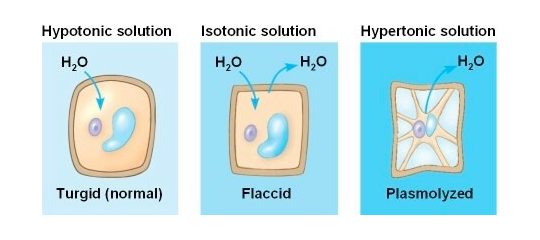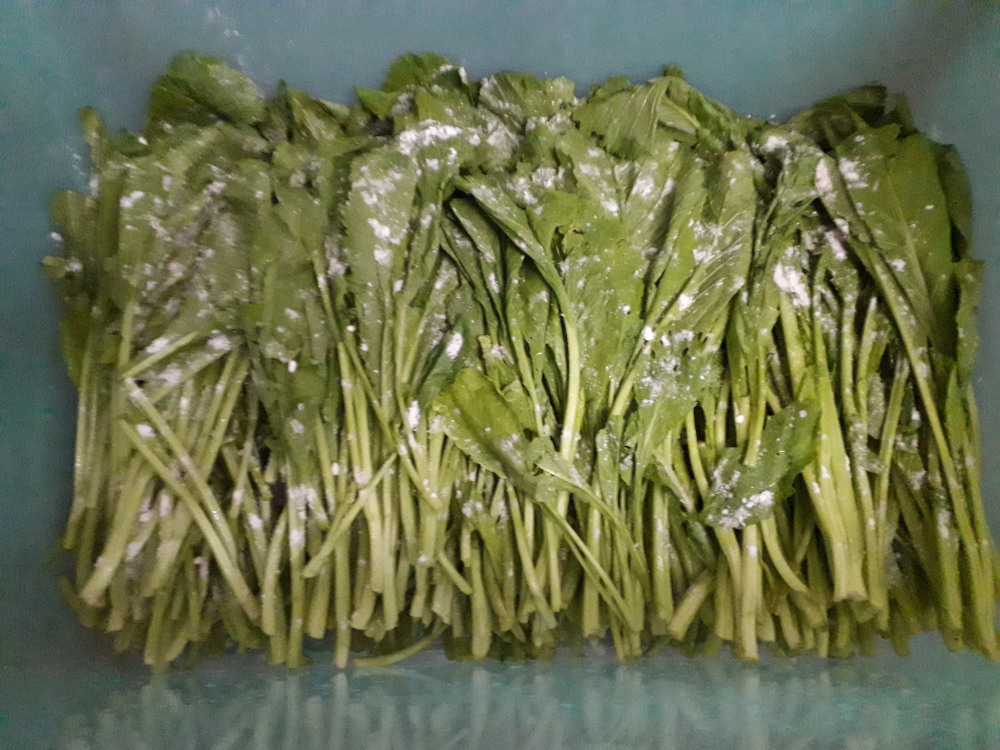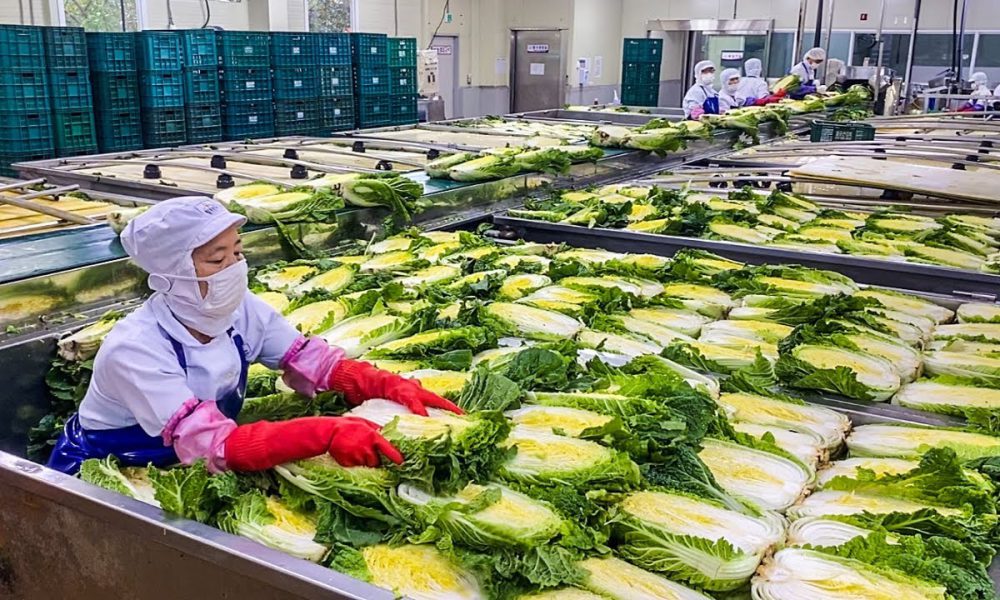MAKING OF HIMAL KIMCHI

Salting Preservation – Magic of Kimchi Starts
Fresh napa cabbages are sprinkled with salt and left overnight in neat piles.
Through osmosis, water moves out of the cabbage cells into the salty environment.
This causes protoplasmic separation (plasmolysis) — cells shrink as water escapes, leading to a crisp yet softened texture.
After salting, the cabbage is rinsed thoroughly in fresh water to remove excess salt.
Scientific Principle:
Water moves from a low-salt (inside cell) to a high-salt (outside) area.
Cells lose water → protoplasm pulls away from cell wall → texture changes.
🧩 Protoplasm separation [ Plasmolysis ]
When plant tissues are put in a high concentration solution such as sugar or salt solution, the water inside the cells goes out and the cells contract and separate from the cell wall is called protoplasmic separation. On the contrary, when the cells are in a solution with a low osmotic pressure, the external osmotic pressure is lowered, so that the flow of water is directed into the cells and cytolysis occurs through deplamolysis. Physically, through observation of protoplasmic separation and protoplasm reversion, it is possible to approximate the solute concentration in the environment around the cell as well as the velocity of a specific solute molecule across the cell membrane of the cell.
1. Osmosis, tension and protoplasm separation
In a low-concentration solution, plant cells absorb water by endosmosis, so it can be observed that the amount of water in the cells increases and the pressure increases and the protoplasm is pushed toward the cell wall. At this time the pressure that is formed into the cell wall tension called (turgor pressure), and each plant cell are obtained bearing capacity is firmly pushed to each other. This is the driving force for annual plants such as herbaceous plants to overcome the influence of gravity and to stand upright on the ground. However, since plant cells have cell walls, when they reach full turgor even with excessive osmotic inflow, more water inflow is prevented, so instead of being destroyed, they have a strong support. If the plant cell is not solid, it will not stand upright. On the other hand, when subjected to a high salt concentration environment, such as in a high salinity region, the plant cells lose water, and in this case, the vacuoles within the cells play a very important role. That is, a large amount of solute such as mannitol, sorbitol, or sugar is stored in the vacuole to prevent water from escaping from the cells, thereby maintaining the swelling pressure.
2. Mechanism of protoplasm separation
In high-concentration solutions, plant cells drain water out of the cells and lose their taut pressure. As a result, the pressure of the cell membrane pushed toward the cell wall weakens, and a gap is created between the cell wall and the cell membrane, and the plasma is peeled off from the cell wall. As a result, plant cells contract and break. When the pressure continues to decrease, it completely collapses into the cell wall. Under this condition, the plant cells atrophy and gradually the plant withers. After protoplasmic separation, in plant cells, the gap between the cell wall and the cell membrane is filled with a high concentration solution. Since water in the cytoplasm fills the space between the cytoplasm with solute, most of the water escapes, and the concentration inside the cell becomes higher and higher. Meanwhile, many plants have various mechanisms to prevent excessive moisture loss.
3. Observation of protoplasm separation of plant cells
Protoplasmic separation occurs only under extreme conditions and rarely occurs in nature. When cells are immersed in a high-concentration salt or sugar solution in a laboratory, the phenomenon of protoplasm separation can be observed, and the process of protoplasm separation can be observed under a microscope using epithelial cells of purple or pink Elodea plants or onions. . Treatment of methylene blue, a dyeing reagent, can more clearly observe protoplasm separation.
4. Types of protoplasmic separation

The phenomenon of protoplasmic separation can be largely divided into two. Concave plasmolysis is a type that occurs in a high-dynamic solution and can be reversed when the concentration of the aqueous solution in the surrounding environment decreases. During protoplasmic separation, the cytoplasm and the cell membrane contract away from the original cell wall. In other words, the cytoplasm surrounded by the cell membrane is separated from the cell wall, and cells surrounded only by the cell membrane in this state are called protoplasts. In the process of concave protoplasm separation, the protoplasts are separated from the surface of the cell wall, but the protoplasts remain connected to the protoplasms of nearby cells, creating a half-moon-shaped empty space. When the cells are put back into the storage environment, water flows into this space and ultimately regains its original shape as it enters the cells. On the other hand, convex plasmolysis is a phenomenon occurring in a low concentration solution and is an irreversible shape that causes serious damage to plants. When plant cells undergo severe protoplasmic separation, protoplasts are completely separated from the cell power and even the connection through protoplasmic liaisons is lost. In this case, even if the cells are placed in the storage liquid environment again, the tension cannot be recovered and the plant withers and dies.




